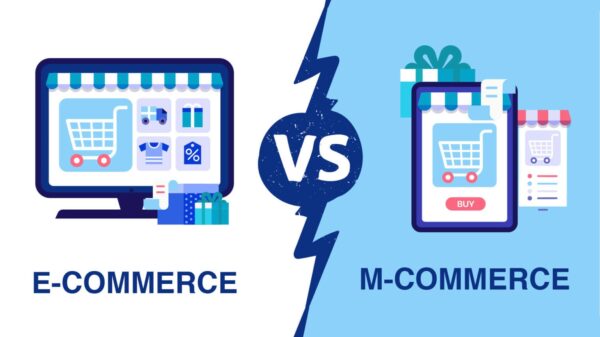Does your blog make any money? Chances are it makes very little. The gold rush for blog ads died out quite a few years ago. Just installing AdSense on your blog is no longer enough. The rates are minuscule, meaning that unless you get millions of visitors per day you’re likely not going to make much more than you pay to host the site.
Other monetization methods, such as affiliate marketing, have taken hold, but they’re becoming less and less profitable as more people try to take advantage. Yet there is one monetization method that has been around since the advent of centralized currency. Yes, I’m talking about selling products.
You might think it’s inconceivable to sell products from your website. You’re just a blog, right? Thankfully, your blog can become a marketing machine for products you sell. The result can be far greater profits than you’ll realize with AdSense or with affiliate marketing. You just need to understand the ins and outs.
Still skeptical? Read on to learn a few lessons about how you can add an e-commerce store to your website.
Find your vertical
Had you started an e-commerce store ten years ago, you could probably have entered any vertical you wanted (other than books, which is and always will be Amazon’s domain). In the last decade e-commerce stores have popped up everywhere, competing fiercely in the highest volume verticals. Even worse, Google itself has started to offer competing services in many of these verticals, making entry a non-option.
In order to find a profitable niche you have to conduct extensive research. This means finding a market that isn’t already saturated; saturated markets lead to nonexistent profit margins. At the same time, you must conduct keyword research to confirm that people are indeed searching for products in this niche. Search is the No. 1 driver for e-commerce sites, so this step is crucial.
Finding a profitable vertical is about finding balance, and that balance is becoming more and more difficult to find. Yet it is the most important step of any new business venture. Pick a low-volume vertical and you might find it difficult to earn enough money. Pick a high-volume vertical and you might find it difficult to make any kind of profit.
Find a supplier
Chances are you do not have enough room in your house or apartment to store inventory. Further, you probably don’t have the money to rent warehouse space — or even buy the product up-front. For most of human history this represented an enormous barrier to entry for business. In order to start one, you needed to buy product, store product, and ship product. Nowadays that’s not totally necessary, you can learn more about the wide array of warehousing, distribution and logistics services currently available.
The easiest way to manage an e-commerce inventory is to utilize drop shipping services. This option, popularized with the rise of Web 2.0 services in the early- to mid-2000s, allows merchants to sell products they don’t physically have in inventory. Instead, a third party stores and ships the items on demand. Yes, the third part takes a sizable chunk of the sale, but the trade-off is worthwhile for many e-commerce retailers. They save on storage space, shipping costs, and the labor required to ship. At the same time, the customer notices almost no difference. It’s a win-win all around, so long as you can still create a profit margin.
Pick a payment system
One aspect that used to hold back e-commerce businesses was payment processing. Very few existed in the early web, which meant high processing rates. When new options, such as PayPal, cropped up, people flocked to them. But at the same time, paying with PayPal is not exactly easy — and then there are the security and support concerns that have driven many away from PayPal. Today, though, there are many different payment options that fit any business’s needs.
Companies like WePay offer a PayPal alternative for merchants, which can save time and help retain customers. Again, many customers will turn away when they reach a PayPal payment system. Some might abandon the process, since it’s a bit more complex than others. With platforms such as WePay, and also Intuit, merchants get a clean, easy-to-use interface that pleases users. These companies also offer competitive rates, so you don’t pay too much for credit card processing.
The payment system is perhaps the most crucial part of any e-commerce business. Pick the right one, and you’ll convert customers and earn money. Pick the wrong one and you’ll turn customers to your competitors.
Optimize (but don’t over-optimize)
As mentioned above, search represents the single greatest source of traffic or e-commerce startups. When people search on Google, they are signaling intent. They are interested in something, at least enough to conduct cursory research. When customers search for something you offer, it is important that they see you front-and-center. This means increasing your Google rankings, although that has become much more difficult in recent years, especially for smaller e-commerce operations.
One key for e-commerce sites ranking in Google is to create clear, robust, human-written copy for each product page. Google already looks at sites with many pages with a skeptical eye. To have shallow content on those pages will likely result in a penalty. It will take many hours, but creating a full, useful description for each product will go a long way in ranking for your best keywords.
Creating on-site content, a.k.a content marketing, can also be useful. Linking to e-commerce product pages isn’t exactly natural. It can work in some instances, when a blogger is explaining something about a particular product. But for the most part, bloggers link to home pages and other blog posts. Creating useful blog posts that bloggers can use as a resource can be incredibly useful in generating traffic and backlinks — both of which will help your rankings.
The key is to not go overboard. Google will penalize anything it views as suspicious from e-commerce sites, so generating a bevy of links in a short period of time will set off a red flag. So make sure to optimize your site, but be careful not to over-optimize. The results of that might put you out of business.
This guide might make it seem extremely easy to start an e-commerce site, and for good reason: it really is easy. The difficult part is growing an e-commerce site to the point of profitability. Start with this foundation, though, and you can expect a greater chance of success.
Joe has been writing and editing niche tech sites since 2007. Now the Marketing Team Lead at digital firm PushFire, Joe talks marketing and business at JoePawl.com.

13 Comments
Leave a Reply
Cancel reply
Leave a Reply
This site uses Akismet to reduce spam. Learn how your comment data is processed.
























































































































































































Pramod
July 19, 2013 at 5:14 pm
When your website isn’t making enough money using contextual or any other advertisemenst ..its good to use affilaite marketing tactic or setting up a ecommerce store on your website …and amazon associates is certainly one of the best programs to setup a store on a website(if one doesnt know about it).
Regards,
pramod
harshi
July 20, 2013 at 2:45 pm
This is the actual stuff that makes me a returning visitor over your blog ! thats raelly cool
Fleur
July 22, 2013 at 6:07 pm
Been looking for paypal alternatives. They have high fees and I had issues with them before. Thanks for sharing.
Pawan
July 22, 2013 at 9:30 pm
Joe very excellent post But getting supplier can be really tuff task.
Pawan
August 1, 2013 at 10:42 am
Everything was written well Joe. It seems like you’ve written this informative article after doing it practically. The last point is still not clear completely to me about the over optimization. Can you help me out to know how to build high quality backlinks (other than commenting)?
Kristenhanna
August 2, 2013 at 8:24 am
Glad that you have shared the simple and easiest steps to and an ecommerce store. Nowadays the numbers of ecommerce stores rising in the marketplace are really high and growing as well. So in this case building an ecommerce store will really turn out more profit in your business. and there are also many open source platforms like magento and joomla really good to build a perfect ecommerce store.
Jack
August 13, 2013 at 11:34 am
Yes Joe, finding the right vertical is often the most difficult part about making money. The reason behind this can be the flocking of half the world’s population to earn money from their website. It’s a fierce competition, everyone is trying their very best.
Ben
August 25, 2013 at 1:41 am
Awesome post, I think e-commerce is an amazing way to monetize a site. I use a plugin to turn wordpress sites into e-commerce sites and it works a treat, there is a lot of competition bit if you hit a winner you’re sorted!
Howard Steele
September 9, 2013 at 3:02 pm
Great advice 🙂 In fact, anyone can build a webstore these days. There are even free online site makers with built-in ecommerce functionality.
Victoria Mudaraya
September 13, 2013 at 10:34 am
Thank you for such detailde advice – it’s a great manual for all who want to start business but don;t know how! Online it’s much easier and you don’t need to spend first
JACOB
September 22, 2013 at 12:37 pm
Glad that you just have shared the straightforward associate degreed best steps to and an ecommerce store. these days the numbers of ecommerce stores rising within the marketplace area unit extremely high and growing yet. thus during this case building associate ecommerce store can extremely end up a lot of profit in your business. When your web site isn’t creating enough cash exploitation discourse or the other advertisemenst ..its smart to use affilaite promoting manoeuvre or fixing a ecommerce store on your web site
Very nice stuff love to read it out.
Weldone.
bala murali
March 10, 2014 at 3:38 pm
yes you are right human written product reviews will bring more customers as well as more search traffic to the eCommerce site
.
shone
September 21, 2016 at 9:20 am
I think e-commerce is an amazing way to monetize a site. I use a plugin to turn wordpress sites into e-commerce sites and it works a treat, there is a lot of competition bit if you hit a winner you’re sorted!